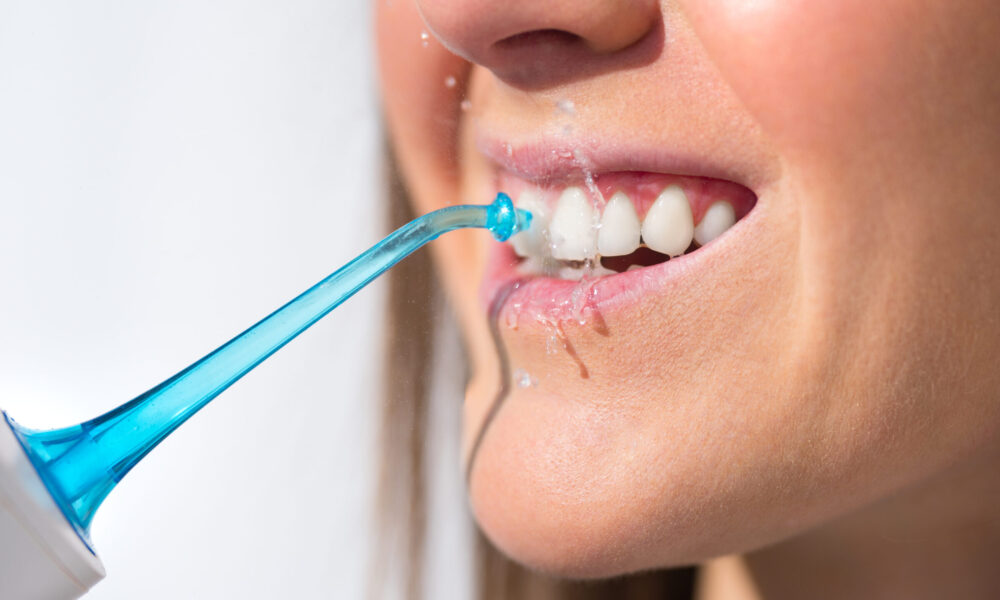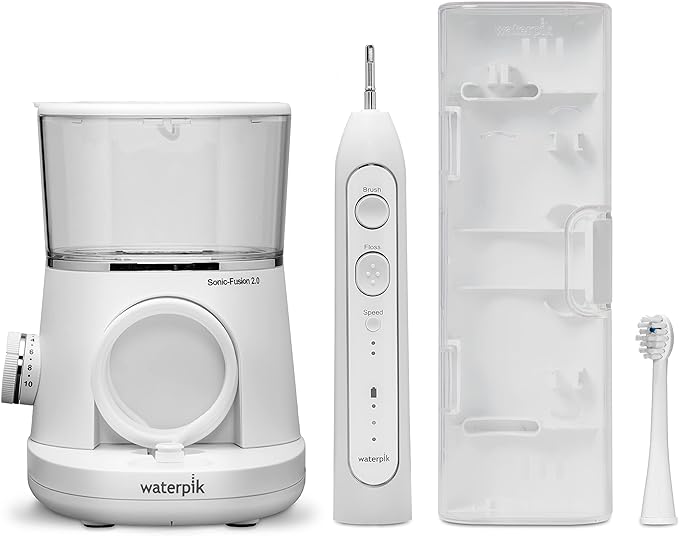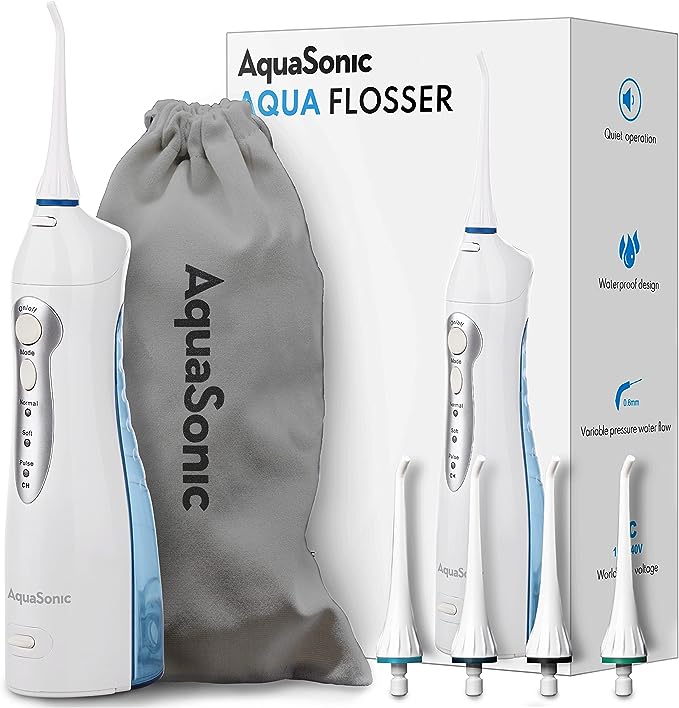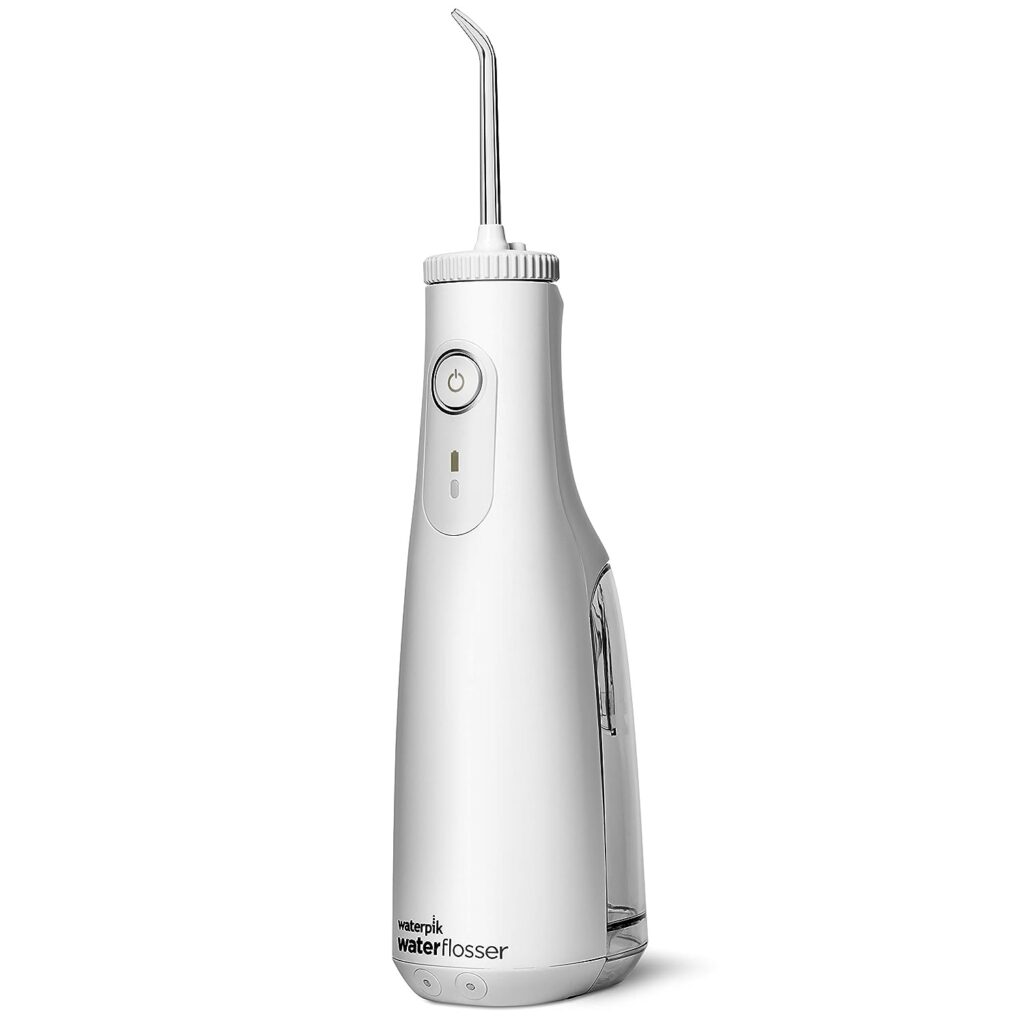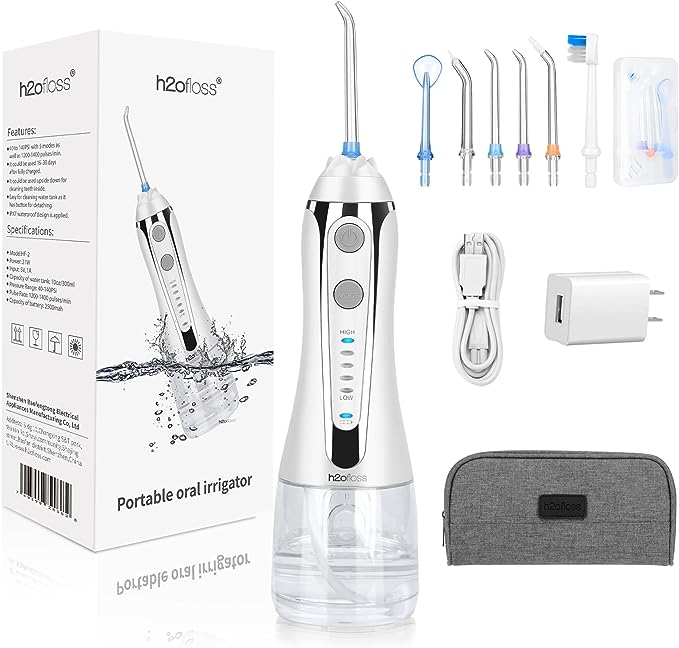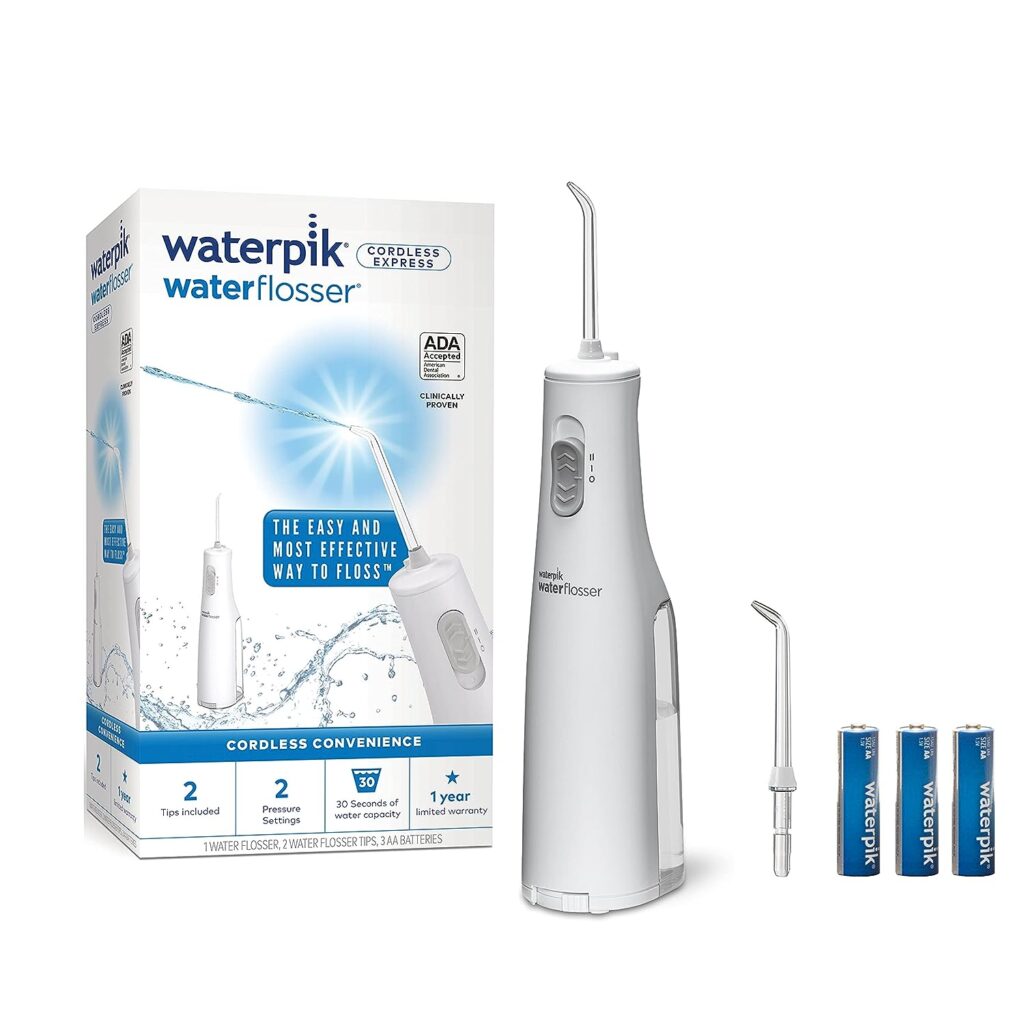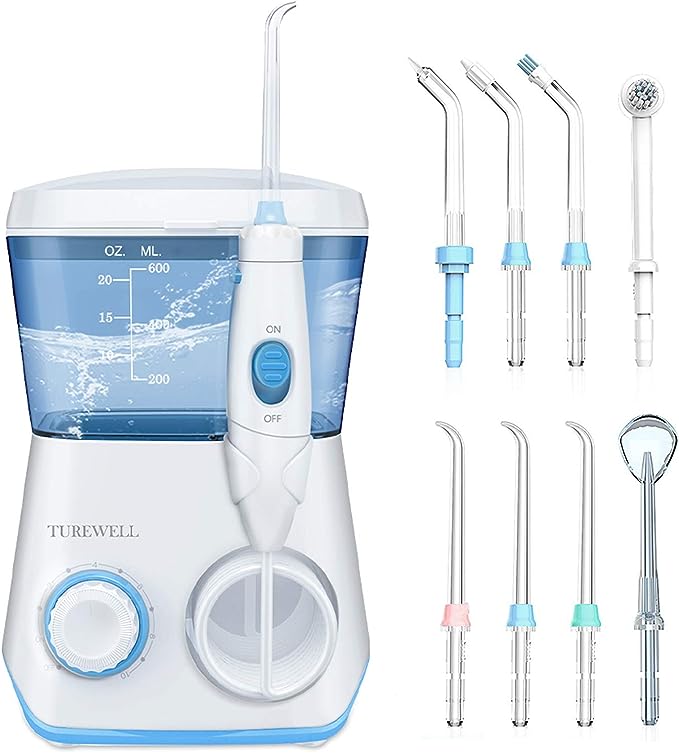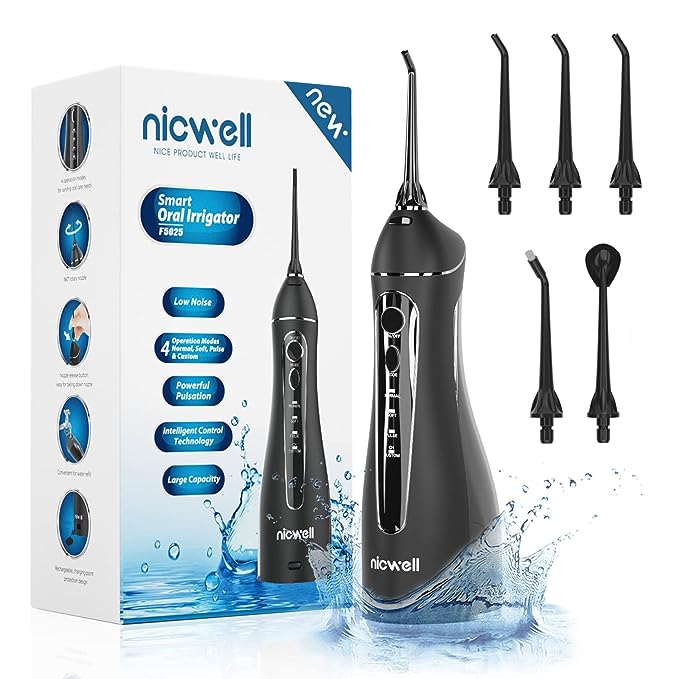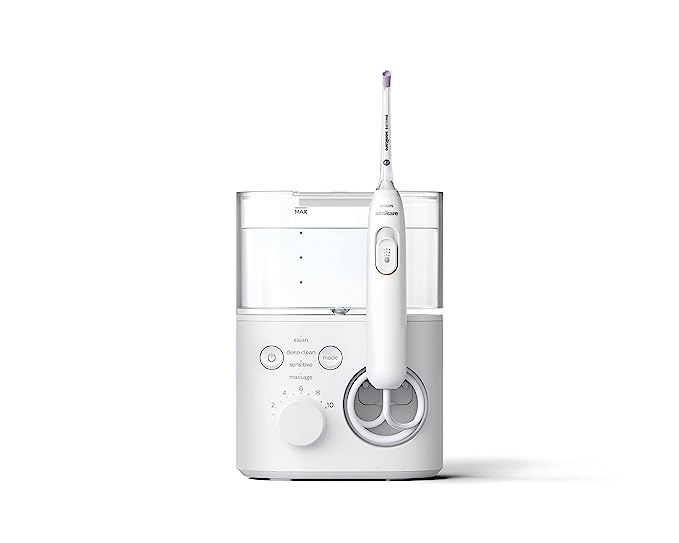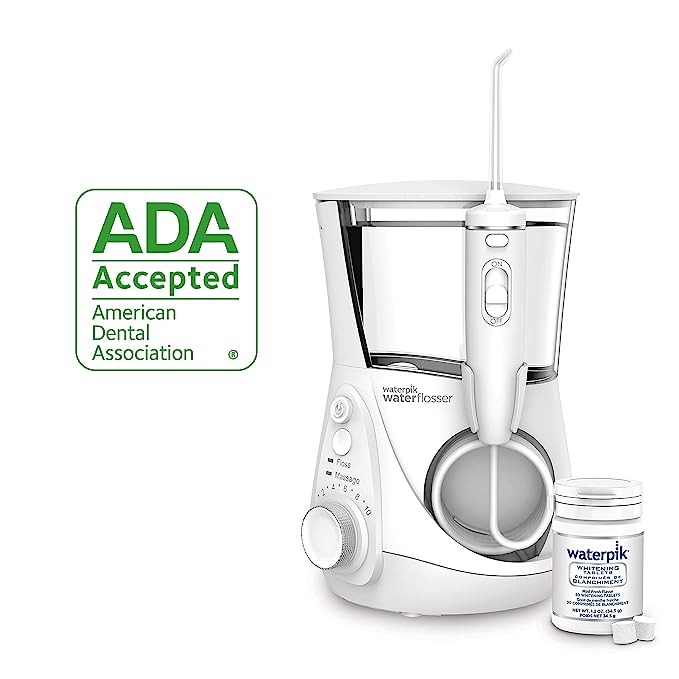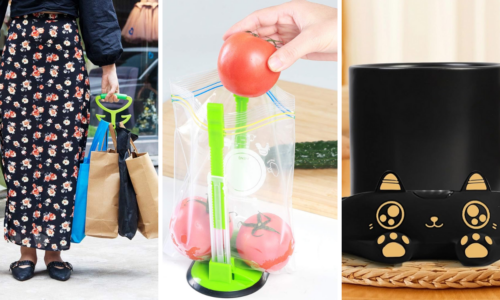The products and services mentioned below were selected independent of sales and advertising. However, Don't Waste Your Money may receive a small commission from the purchase of any products or services through an affiliate link to the retailer's website.
As a general rule, dentists are big fans of flossing. But they’re well aware that not everyone shares their zeal.
“In my 30-plus years of experience, I have found flossing to be very difficult for most patients,” says Dr. Mitchell A. Kaufman, a dentist and periodontist with NowDental in Bellmore, New York. “Especially for the back teeth.”
Dr. Guneet Alag, a dentist at Fab Dental in Hayward, California, notes that people with limited dexterity aren’t always able to use floss effectively. And “if string floss is used incorrectly or too aggressively,” she says, “it could cause trauma to the teeth and gum tissue.” Flossing is also tough for people wearing braces.
Enter the water flosser — a device that uses pressurized water to clean the gaps between teeth. Though few dentists consider a water flosser a replacement for string flossing, there are significant benefits to adding one to your personal care routine.
“Water flossers are easier for some people,” says Dr. Tyler Hales, a dentist with Facer Hales Parker Dentistry in Ladera Ranch, California. “The goal is to do it, and if the patient likes it then they will do it more.”
Whatever your reason for buying a water flosser, you have over a dozen brands to choose from. Where to begin? We asked several dental experts to recommend the best options in various categories.
Every dentist interviewed began by recommending Waterpik. “It’s the OG, which is why it’s the number one brand,” says Dr. Scott Cardall, an orthodontist and owner of Orem Orthodontics in Orem, Utah. But he notes that other brands could also be beneficial depending on the special features they offer.
Jump To: Best Overall | Best Splurge | Best Cordless | Best Cordless Waterpik | Best Budget | Best Budget Waterpik | Best for Sensitive Teeth and Gums | Best Compact Flosser for Small Spaces | Best for Braces | Best Whitening
As the dental experts evaluated water flossers in various categories, they considered several factors. Here are the criteria to keep in mind when making your own decision.
What To Look For
Multiple Pressure Levels:
“I always tell my patients to buy one that has different pressure level options,” says Chicago-based registered dental hygienist Whitney DiFoggio. “Always start on a low setting. If it feels good, then continue using that setting. If you can barely feel it, then turn it up. You want to feel the gingival stimulation, however, you do not want it to sting or hurt!”
Reservoir Capacity:
Countertop water flossers have a separate water tank, while portable models have a reservoir that’s attached to the flosser itself.
Dr. Cardall prefers the countertop models with a separate tank because “the reservoir can store much more water/irrigant before running out.” For example, a standard Waterpik tank holds 22 ounces, which allows you to floss for 1 1/2 to 2 minutes before you run out of water.
With a portable water flosser, your reservoir may hold as little as 5 ounces, so you’ll have to refill it two or more times during a single, two-minute session of flossing. Of course, if you have a tiny bathroom — or portability better suits your lifestyle — you may be happy to sacrifice the large water tank.
ADA Seal:
“The ADA seal of approval can offer you assurance that your dental tool has been verified for safety and efficacy,” says Dr. Alag. “Waterpik and Philips Sonicare are the only brands with ADA approval currently.”
Cost:
Water flossers can cost anywhere from under $20 or over $150, depending on the model and brand you buy.
Special Features:
These might include extra tips (which typically need to be replaced about once every six months) or a 2-in-1 flosser and electric toothbrush combination.
Our Recommendations for Best Water Flossers
1. Best Overall — Waterpik Aquarius Water Flosser
$74.98 at Amazon $80.94 at Walmart
Pressure Levels: 10 | Reservoir Capacity: 22 ounces (countertop tank) / ADA Seal:: Yes | Best Value: $74.98 (was $99.99) at Amazon / Special Features: 7 tips for multiple family members, 1 minute timer with 30 second pacer
“Waterpik is a reliable and well-established brand,” says Dr. Jennifer Silver, a dentist at Macleod Trail Dental in Alberta, Canada. As an overall good choice, she recommends the Aquarius “for general oral hygiene because it’s effective for those with normal gum health.” It has 10 pressure options and holds enough water for 90 seconds of flossing time.
- Pros: Holds enough water for 90 seconds of flossing, 10 pressure modes
- Cons: Not portable, relatively pricey compared to other models
2. Best Splurge — Waterpik Sonic-Fusion 2.0 Flossing Electric Toothbrush
$169 at Amazon $159.97 at Walmart
Pressure Levels: 10 | Reservoir Capacity: 16 ounces (countertop tank) | ADA Seal:: Yes | Best Value: $159-$169 at Walmart and Amazon / Special Features: 3 Modes (Brush, Floss, Brush and Floss at Same Time), 2-minute timer with 30-second pacer, recharge indicator, deluxe toothbrush travel case
Nearly all the dentists interviewed mentioned this innovative toothbrush-flosser combo, because it allows you to brush and floss simultaneously. “I believe if you make something convenient and easy for patients they are more likely to use it,” Dr. Kaufman says. “We have noticed a marked difference in our patients’ overall oral hygiene when they use this product.”
And the brush itself is top-quality: “The toothbrush has a really good bristle tip speed, that provides extra plaque removal and promotes gum health,” says Dr. Shahrooz Yazdani, CEO and Director of Costello Family Dentistry in Ontario, Canada.
- Pros: Toothbrush and water flosser combo, 10 pressure levels
- Cons: Not portable, pricey
3. Best Cordless — Aquasonic Aqua Flosser
$39.95 at Amazon $39.95 at Walmart
Pressure Levels: 3 | Reservoir Capacity: 5 ounces (built-in) | ADA Seal:: No | Best Value: $33.95 (was $49.95) at Amazon and Walmart / Special Features: Rechargeable lithium-ion battery, portable, waterproof, travel bag, 4 nozzles
While this water flosser isn’t by Waterpik, Dr. Silver likes that it’s “professional-grade and rechargeable.” Its ergonomic design makes it comfortable to hold, and it comes with four extra tips. The small reservoir holds enough water for 30 seconds of flossing, so it will have to be refilled at least once.
- Pros: Affordable, portable
- Cons: Small reservoir needs to be refilled at least once per flossing session, no ADA seal
4. Best Cordless Waterpik — Waterpik Cordless Select Water Flosser
$79.99 at Amazon $102 at Walmart
Pressure Levels: 2 | Reservoir Capacity: 7 ounces (built-in) | ADA Seal:: Yes | Best Value: $79.99 at Amazon / Special Features: 4 flossing tips, magnetic USB charger
“I’m a fan of the Waterpik brand because I know they are reliable,” says Dr. Kristy Gretzula, a dentist at Hawley Lane Dental in Stratford, Connecticut. “I usually encourage patients to go with a cordless option so they can use it in the shower … it’s way less messy that way!”
- Pros: Portable, 4 extra tips
- Cons: Small water reservoir, only 2 pressure levels
5. Best Budget — H2ofloss Cordless Water Dental Flosser
$32.99 at Amazon $27.99 at Walmart
Pressure Levels: 5 | Reservoir Capacity: 10 ounces (built-in) | ADA Seal:: No | Best Value: $19.99 after you apply $12 coupon at checkout (was $31.99) at Amazon / Special Features: Built-in rechargeable lithium battery, waterproof, 6 multifunctional tips
For those looking to spend less than $20 on a water flosser, Dr. Hales recommends the H2ofloss Cordless Water Dental Flosser as a good budget option. It has a rechargeable battery that lasts 15-30 days on a single charge, so it’s great for traveling. It also comes with a USB waterproof charging port. Plus, you can choose from six multifunctional nozzles, and the built-in water reservoir is detachable and easy to fill.
- Pros: Affordable, portable, lots of different nozzles
- Cons: No ADA seal
6. Best Budget Waterpik — Waterpik Cordless Water Flosser
$27 at Amazon $37.97 at Walmart
Pressure Levels: 2 | Reservoir Capacity: 5 ounces (built-in, removable) | ADA Seal:: Yes | Best Value: $35 (was $39.99) at Amazon / Special Features: Portable (powered by 3 AA batteries), 2 tips
Waterpik’s least expensive model lacks all the bells and whistles but still delivers the quality associated with this brand. The Waterpik Cordless Water Flosser has a small reservoir that will need to be refilled during your flossing session, and it only has one extra tip. But it’s very affordable, and, being a Waterpik, it carries the ADA seal.
- Pros: Affordable, trusted brand, portable
- Cons: Small water reservoir, need to replace AA batteries periodically
7. Best for Sensitive Teeth and Gums — Turewell Water Flossing Oral Irrigator
$39.99 at Amazon $55.52 at Walmart
Pressure Levels: 10 | Reservoir Capacity: 20 ounces (countertop. tank) | ADA Seal:: No | Best Value: $31.59 (was $45.99) at Amazon / Special Features: 8 multifunctional nozzles, ergonomic handle
Though this water flosser doesn’t carry the ADA seal, Dr. Silver points out that it has some good features. “It offers a range of pressure settings, it’s suitable for users with varying gum sensitivities, and it’s good for households with multiple users,” she says.
- Pros: Large water reservoir, affordable, 8 different nozzles
- Cons: No ADA seal, not portable
8. Best Compact Flosser for Small Spaces — Nicwell Water Dental Flosser Teeth Pick
$35.99 at Amazon $39.99 at Walmart
Pressure Levels: 4 | Reservoir Capacity: 6.8 ounces (built-in) | ADA Seal:: No | Best Value: $35.99 (was $49.99) at Amazon / Special Features: 5 interchangeable jet tips, rechargeable battery, USB cable, portable, waterproof
This compact and portable water flosser “may have fewer features compared to larger models,” says Dr. Silver. “But it’s suitable for travelers or those with limited space.” And with several extra jet tips, you won’t have to replace them for a few years.
- Pros: portable, 5 extra tips, affordable
- Cons: small water reservoir, no ADA seal
9. Best for Braces — Philips Sonicare Power Flosser 7000
$139.99 at Amazon $139.99 at Target
Pressure Levels: 10 | Reservoir Capacity: 20 ounces (countertop tank) | ADA Seal:: Yes | Best Value: $139.99 at both Amazon and Target / Special Features: 10 pressure settings
Though Dr. Alag generally recommends the Waterpik brand, she sees a lot to love about the Philips Sonicare. In fact, “there are reports that the Philips Sonicare Power water flosser is the most effective,” she says. Both brands carry the ADA seal. This flosser has 10 pressure levels and a good-sized water tank.
-
- Pros: Large reservoir capacity, 10 pressure settings
- Cons: Pricey
10. Best Whitening— Waterpik Whitening Water Flosser
$89.99 at Amazon $99.99 at Kohl’s
Pressure Levels: 10 | Reservoir Capacity: 22 ounces (countertop tank) | ADA Seal:: Yes | Best Value: $89.99 (was $119.99) at Amazon / Special Features: 4 whitening tips, 30 whitening tablets, tip storage case
“A water flosser can also enhance the effectiveness of tooth-whitening treatments,” says Dr. Alag. The Waterpik Whitening Water Flosser claims to floss your teeth while also restoring them to their natural whiteness in four weeks. A whitening tablet inserted into the flosser’s flip-top handle infuses the water with a stain removal agent that also works on plaque and boosts gum health — without harsh bleaching chemicals.
- Pros: Large reservoir capacity, whitening, 10 pressure levels
- Cons: Relatively pricey, not portable
Sources:
- Dr. Mitchell A. Kaufman, a dentist and specialist in the field of Periodontics and Implant Surgery with NowDental
- Dr. Shahrooz Yazdani, CEO and Director of Costello Family Dentistry
- Dr. Kristy Gretzula, a dentist at Hawley Lane Dental
- Dr. Jennifer Silver, a dentist at Macleod Trail Dental
- Dr Guneet Alag, a dentist at Fab Dental
- Whitney DiFoggio, BS, RDH, aka Teeth Talk Girl
- Dr. Tyler Hales, a dentist with Hales Parker Dentistry
- Dr. Scott Cardall, an orthodontist and owner of Orem Orthodontics
***Correction (Oct. 6, 2023): In an earlier version of this story, Whitney DiFoggio’s name was misspelled.
